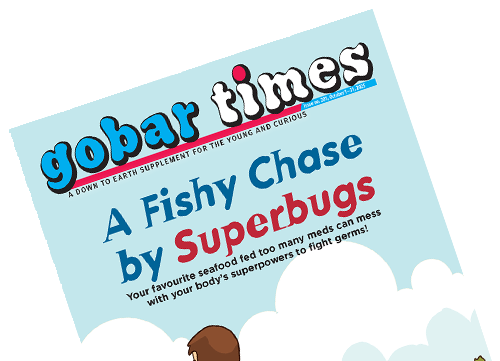
Join Pranay Lal on an awe-inspiring exploration of the “invisible empire” of viruses. With the COVID scare freaking the world out, it is apt that we dig a little to unlock the myths and mysteries of these ‘kritters’. Unlearn the prejudices about viruses, relearn about their omnipotence, and learn more about their unmissable enigma.

The Yamuna River is the largest tributary of the Ganga. It travels barely a distance of 22 km through Delhi. However, this region contributes to about 80 per cent of its total pollution load. Currently, this stretch discharges waste water from almost 22 drains into the river. Untreated effluents, containing toxins and chemicals, released from houses and industries creates froth (white foam) on the river’s surface. Algae, in addition, prevents sunlight from venturing into the depths of this river. Plus, low water level in the river causes concentration of these pollutants…

How often does an older relative strike a conversation with you that begins with ‘back in our days...’? And how often do you switch off after hearing this apparently insipid conversation starter? If you do it often, then hang on! We have some news for you. These stories of the past from your elders, particularly about the environment, can provide a lot of crucial information and insights to you…

Fermented food is not only tasty but it is also good for health **************************************************************************************** Babbi tugged urgently at her Mom’s kurta. “Mom, there is some white, gooey stuff oozing out of that big pan on the kitchen slab,” she whispered. Mom looked at the direction Babbi was pointing towards. “My dosa batter” She muttered and transferred part of the gooey liquid into another pan...

In the last year, young people have seen more climate events happening than elders might have experienced in the last couple of decades. So, it is no surprise that 2021 has been declared the 5th hottest year on record.

You know Jackie Chan, right? Or was he a superstar when I was growing up? Yes, you are right, you probably do not know Jackie Chan, the greatest martial artist to have ever walked the earth. The world changes fast these days. Heroes of my childhood are not the heroes of your childhood. Jackie Chan was a household name in urban India when I was growing up. He was an action hero who did all of his stunts himself. Yes, that’s right, no stunt double, no CGI (Computer-Generated Imagery), nothing, and he got hurt, really hurt, while performing his stunts, but he just went on and on like a trooper...

Climate change is no longer a discussion that can happen in silos. Increasing carbon footprint and its impact on the 21st century environment is becoming part of many daily conversations in schools. But to achieve long term goals, more needs to be done. India has the lowest per capita emissions compared to the major world economies including the US, China and the European Union. Despite this fact, the impact of climate change has become evident in our country through rising levels of air pollution and extreme weather situations. Therefore, India is an active stakeholder in shouldering the responsibility with its global …

Held as usual a few days before COP (October 28-31 last year), this youth conference is the biggest so far, with thousands of participants having registered from over 140 countries. This is leaps and bounds ahead of the few hundred participants that would attend the conference a decade ago. The sixth edition of the conference, for instance, held in Cancun, Mexico in 2010, saw just 500-odd attendees. The main agenda of the youth conference this year, as per Heeta Lakhani...

At the outset, I want to thank the United Nations of Humans for giving us this opportunity to address all of humankind. I speak on behalf of the quintillion microbes of our planet. I know that we are speaking to you in a time of great distress. Each of you present here has faced personal tragedies. We convey our deepest condolences...

